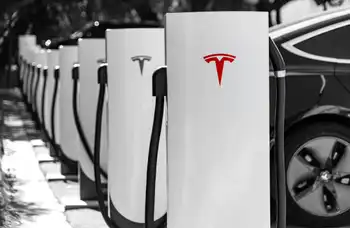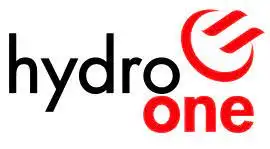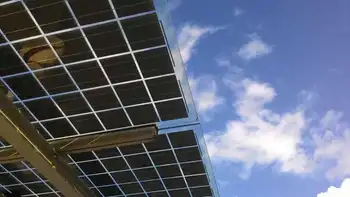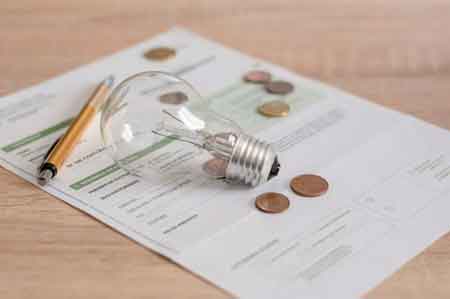Incentives add shine to ChinaÂ’s solar drive
By Reuters
Protective Relay Training - Basic
Our customized live online or in‑person group training can be delivered to your staff at your location.

- Live Online
- 12 hours Instructor-led
- Group Training Available
Shares of U.S.-listed Chinese solar firms such as Suntech Power Holdings, the world's biggest crystalline solar panel-maker, have risen strongly on expectations China will soon unveil more cash incentives to develop solar energy.
China, the world's top greenhouse gas polluter, is trying to catch up in a global race to find alternatives to fossil fuels, blamed for carbon emissions affecting the planet's climate.
Any cash perques for the sector will help drive demand for solar energy systems and create bigger businesses for companies involved in the entire solar supply chain, says Julia Wu, an analyst with research firm New Energy Finance.
Top panel-makers including Trina Solar, Yingli Green Energy Holding Co and JA Solar are expected to benefit, while solar wafer-makers such as LDK Solar could gain from related business opportunities.
"China could potentially be the top market for solar. Companies up and down the supply chain should benefit," said Wu.
Beijing is considering enhancing cash incentives at a time when European states including Germany, one of the largest solar markets, are pulling back on spending to slow industry growth.
Nearly 10 years of subsidized prices have made Germany among the largest markets for photovoltaic panels, which transform sunlight into electricity, producing solar giants including Q-Cells AG and Conergy.
"The photovoltaic industry has very good opportunities in the medium and long term now that a lot of countries have decided to develop new energy as an important measure to combat the economic crisis," Shawn Qu, president and chief executive officer of Canadian Solar Inc, told Reuters.
Although China supplies half the world's solar panels, it contributes very little to demand as the cost of tapping solar energy to generate electricity remains steep and investors find little economic sense in pursuing solar projects in China where incentives are few.
But that's about to change.
China's government said in March it will offer to pay 20 yuan (US $2.90) per watt of solar systems fixed to roofs and which have a capacity of more than 50 kilowatt peak (kwp).
The subsidy, which could cover half the cost of installing the system, was popular among developers, attracting applications equivalent to the building of 1 gigawatt of solar power.
One GW, or 1 billion watts, is enough electricity to power a million homes.
China is expected to raise its 2020 solar power generation target more than fivefold to at least 10 GW. With incentives, analysts expect over 2 GW in new solar capacity will be installed as early as 2011, up from just over 100 MW in 2008.
To further attract investors, Beijing may align its solar energy policy with an incentive scheme used in Europe and the United States called "feed-in tariff," which guarantees above-market prices for generating solar power.
China is widely expected to announce a subsidized price for solar power of 1.09 yuan per kW-hour (kwh), or 16 cents, which is over three times the rate paid for coal-fed electricity in China, but far below the established solar tariffs of about 45 cents in Europe and 30 cents in the United States.
"It would be too low considering the current manufacturing technology," said Fang Zheng, general manager of China Huadian Corporation New Energy Resources Development Co, the renewable energy unit of state-owned Huadian Group. "Such a price would not help the development of the solar power generation industry."
Several Chinese power producers say a fair price for solar power would be 1.5 yuan per Kwh. Without a guaranteed high price, solar firms may find it hard to compete.
"In itself (the tariff), it's not enough encouragement for the market," said CLSA analyst Charles Yonts. "Even in the sunniest areas, you're still looking at a negative return or below your cost of capital based on current prices."
Yonts estimates a developer would have to bring down costs by 30 percent to $3 a watt for a project to yield a return of as little as 8 percent.
Nevertheless, analysts say that taken together, Beijing's proposed tariff and other perques should help generate decent returns given that local labor and equipment costs are cheap.
"(The tariff) sounds a little light relative to European feed-in tariffs," Steven Chadima, Suntech vice president of external affairs, told a recent conference in the United States.
"But the costs are substantially lower in China and there are also other incentive programs available to package together to be able to create a reasonable electricity price coming off these projects."
Moreover, prices of polysilicon are expected to fall further below the current $60 a kilogram amid a glut of the solar panel material, further cushioning costs.
Certainly a view that the overall impact of the China incentives will be beneficial to the solar sector appears to be reflected in company share prices — Suntech shares hit a 7-month high.











